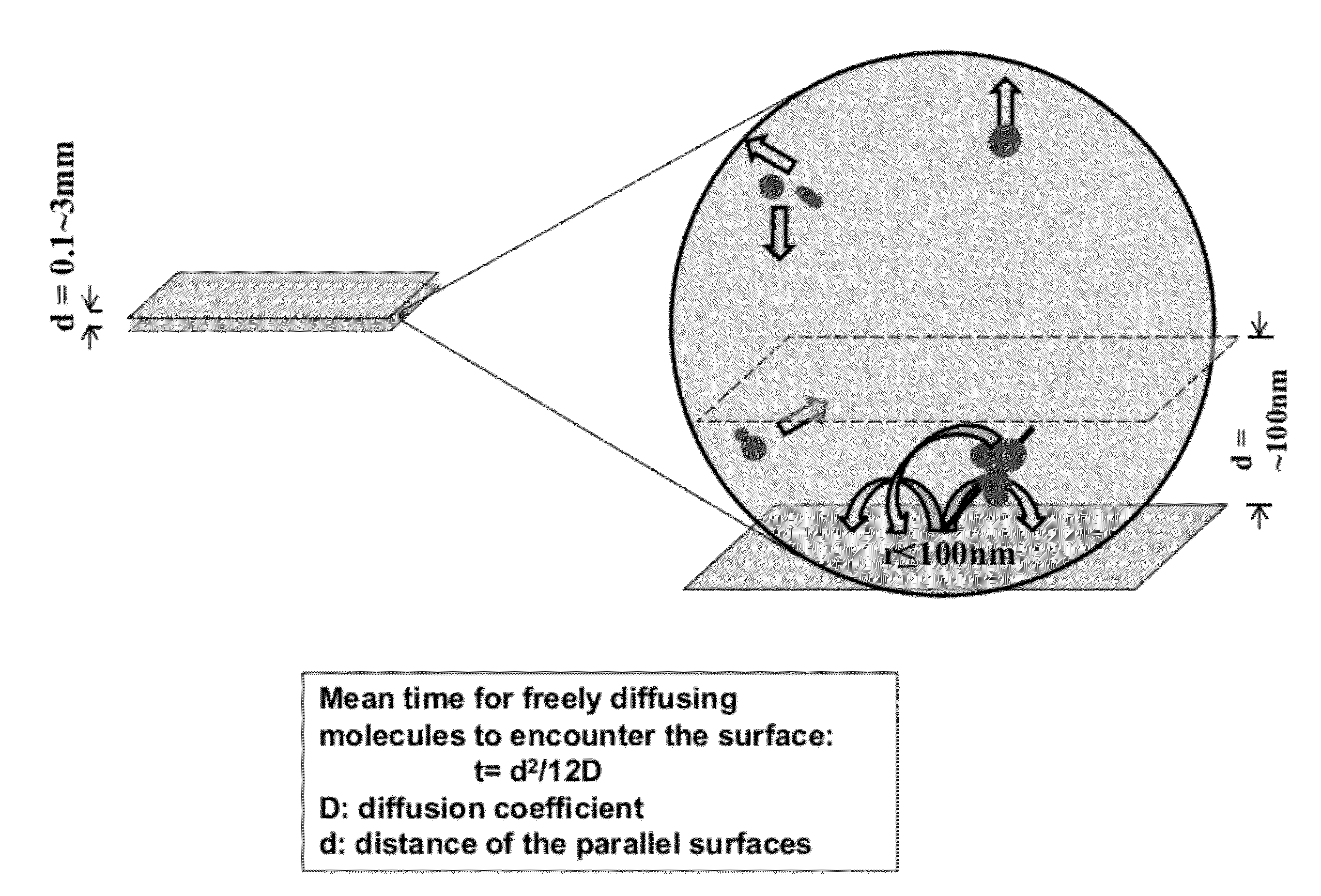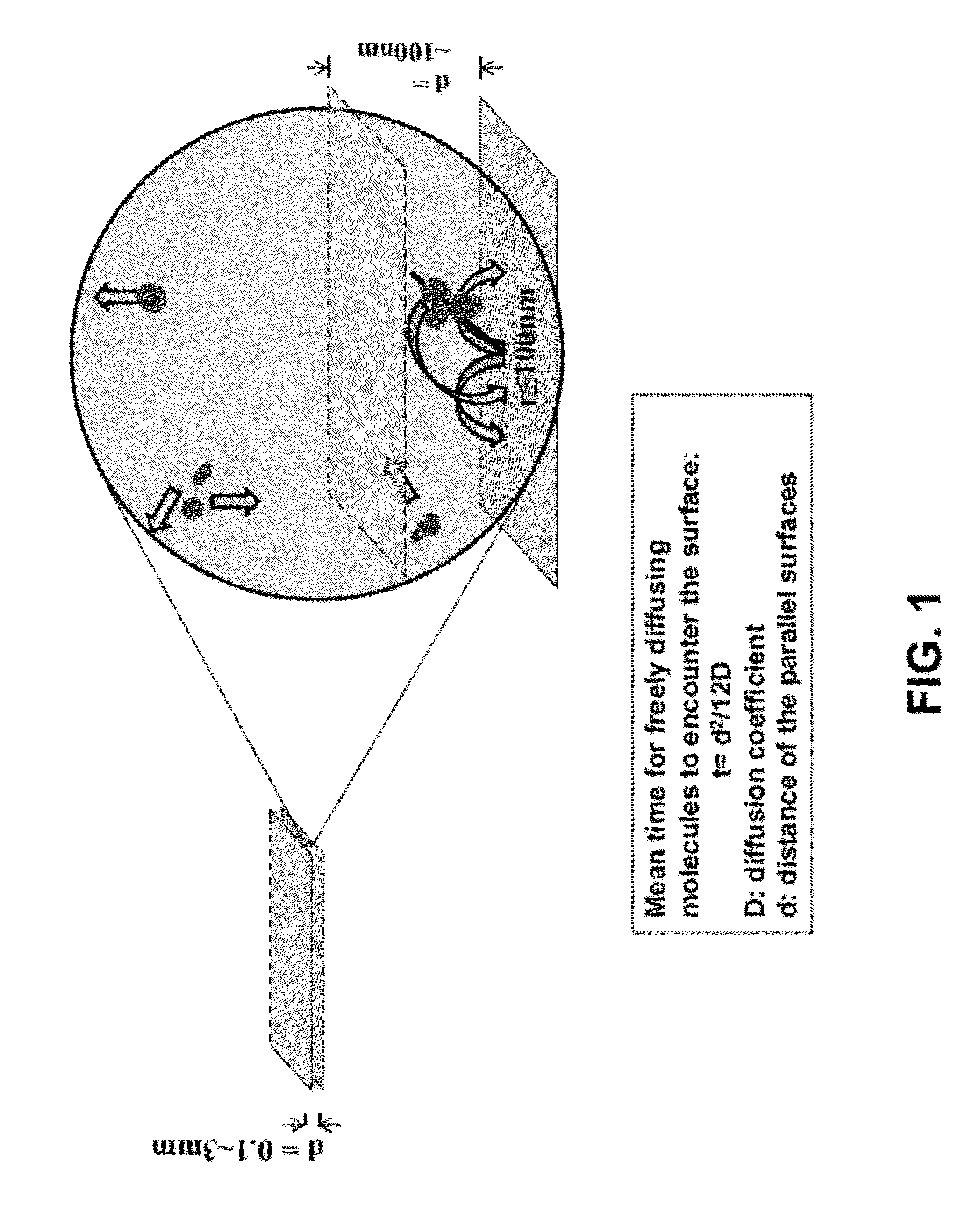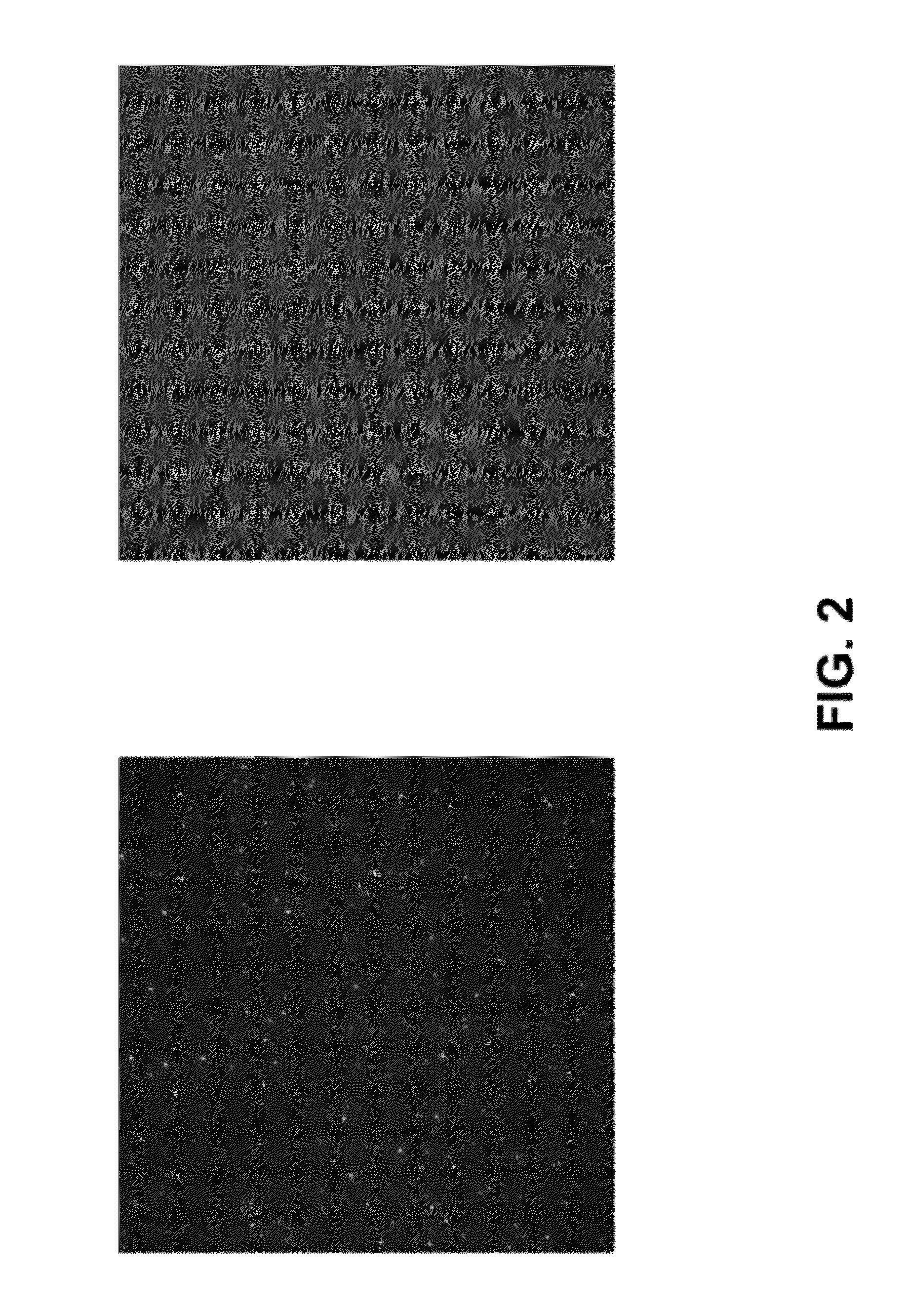Surface Passivation Methods for Single Molecule Imaging of Biochemical Reactions
a biochemical reaction and surface passivation technology, applied in the field of surface passivation methods for biochemical reactions, can solve the problems of reducing the availability and activity of fluorescent molecules on the surface, increasing background noise, and interference with the signal from the specific field
- Summary
- Abstract
- Description
- Claims
- Application Information
AI Technical Summary
Benefits of technology
Problems solved by technology
Method used
Image
Examples
example 1
Passivation Methods
Passivation Procedure
[0056]Borosilicate glass cover slips (VWR 48393 230) were placed in ceramic racks and treated with Piranha solution (3:1 H2SO4:H2O2) twice for 30 min, and rinsed with deionized water until pH had stabilized (according to an indicator paper test). H2SO4 was concentrated, and H2O2 was a 30% solution. The slides were then treated with 0.5 M potassium hydroxide for 1 hour in a ultrasound water bath and rinsed with deionized water until pH had stabilized (according to an indicator paper test).
[0057]The cleaned substrates were briefly rinsed with acetone and soaked in a 3% solution of aminopropyltriethoxysilane (APTES, CAS #919-30-2) in acetone for 45 min with shaking The substrates were then rinsed briefly with acetone, and rinsed copiously with deionized water. The substrates were then immediately blown dry with clean nitrogen. Functionalization of the APTES-modified slides was achieved by incubation of coverglasses with freshly prepared 10% solut...
example 2
Characterization of Surface Passivation Using a “Stickiness Assay”
[0061]Glass coverslips (either modified with PEG alone, or with PEG followed by passivation with the hydrophobic siloxane) were prepared as described herein. An imaging “sandwich” flow cell was assembled using two coverslips and double-sided tape. Several “channels” were created with the double-sided tape to allow imaging of different test proteins on the same surface. Phosphate-buffered saline (pH 7.5) containing 0.1% Tween 20 (“PBST”) was injected into the channel and incubated for at least 5 min. As a first test protein, a 10 nM solution in PBST of E coli RNA polymerase holoenzyme labeled with Alexa555 at the sigma subunit was injected into the “channel”. As another test protein, a 10 nM solution in PBST of the highly basic U1A RNA-binding protein was injected into another channel. Interactions of the labeled protein with the surface were detected with real-time single-molecule TIRF microscopy (objective type). Bri...
example 3
Characterization of Surface Passivation Using an Activity Decay Assay
[0064]The following “transcription activity decay” experiment was used to monitor the loss of activity of factors that make up the RNA polymerase II transcription system. Due to the high complexity of the Pol II system, this assay is very sensitive to the quality of surface passivation and can be similarly applied to other complex systems.
[0065]A “surface decay machine” shown in FIG. 4A was set up to measure transcription activity decay between two modified glass cover slips as follows: (1) the bottom glass coverslip was glued to a stationary base with an adhesive, with the passivated side facing up; (2) the top glass coverslip, with the passivated side facing down, was placed above the bottom coverslip, and glued to a support that can be moved up and down with a micrometer. The resulting even narrow space between the two coverslips holds the “transcription reaction mixture” for the decay assay (see below for the d...
PUM
| Property | Measurement | Unit |
|---|---|---|
| time | aaaaa | aaaaa |
| time | aaaaa | aaaaa |
| diameter | aaaaa | aaaaa |
Abstract
Description
Claims
Application Information
 Login to View More
Login to View More - R&D
- Intellectual Property
- Life Sciences
- Materials
- Tech Scout
- Unparalleled Data Quality
- Higher Quality Content
- 60% Fewer Hallucinations
Browse by: Latest US Patents, China's latest patents, Technical Efficacy Thesaurus, Application Domain, Technology Topic, Popular Technical Reports.
© 2025 PatSnap. All rights reserved.Legal|Privacy policy|Modern Slavery Act Transparency Statement|Sitemap|About US| Contact US: help@patsnap.com



